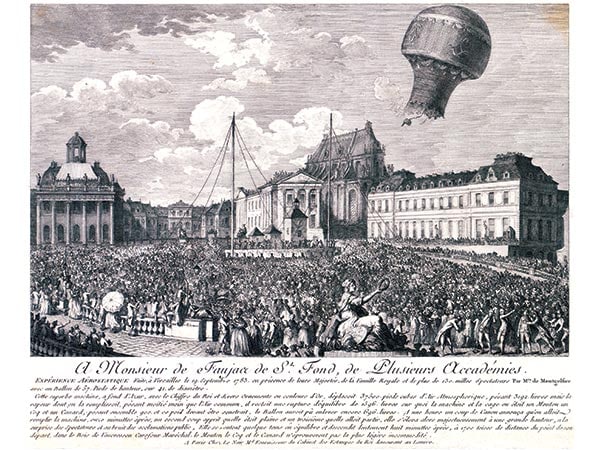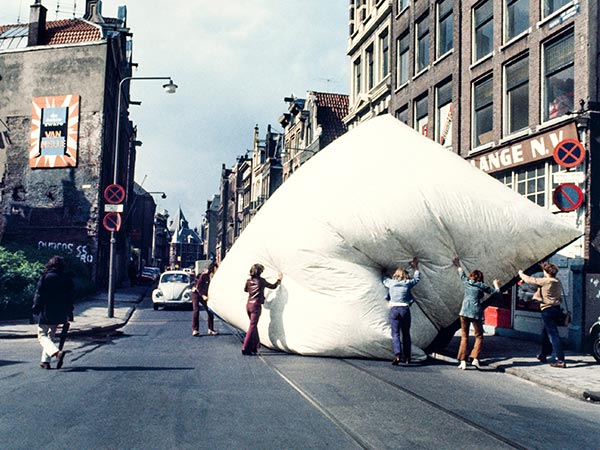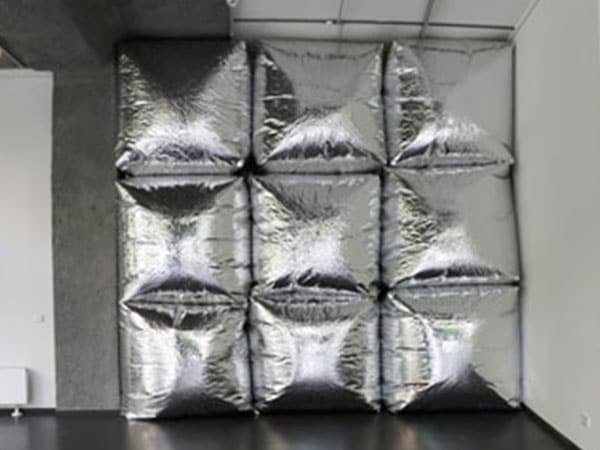

Balloon Fever

The first balloon ascent with animals on September 19, 1783 Courtesy of Deutsches Museum

Throughout history, societies have been fascinated with flying objects.
Balloon Fever explores how ballooning became a source of mass fascination for the public especially in Europe in the 18th and 19th centuries, with thousands of people attending public demonstrations of hot air balloon flights. Balloon spectacles shifted the public’s perception of what was possible, inspiring new modes of travel and communication, and prompting scientific innovation.
In the late 1960s, a new kind of inflatable fever caught the public imagination. Against the backdrop of the Cold War, widespread civil unrest unfolded in Europe and the USA. Artists and architects searched for alternatives to the existing political reality. New synthetic materials and inflatable media led to a new era of construction — from solid buildings to ephemeral structures, from durable art to temporal events – propagating a more fluid, nomadic vision of society.
List of artists: Ant Farm, The Yes Men, Tanero Oki Architects, Graham Stevens

Eventstructure Research Group, Cushion, 1969


2016, Insulation foil, tape, plastic bottle caps and ventilator, courtesy of Tools for Action (Artúr van Balen and Tomás Espinosa) Photo copyright: Luca Girardini, nGbK Berlin, 2018, Photo copyright: Luca Girardini